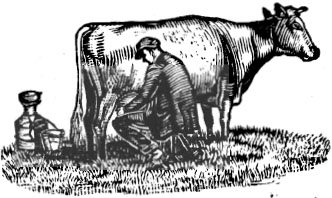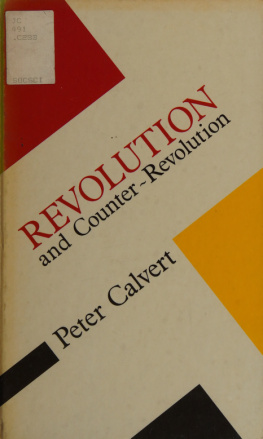T. C. Calvert - The Story of Wensleydale Cheese
Here you can read online T. C. Calvert - The Story of Wensleydale Cheese full text of the book (entire story) in english for free. Download pdf and epub, get meaning, cover and reviews about this ebook. year: 2016, publisher: Read Books Ltd., genre: Home and family. Description of the work, (preface) as well as reviews are available. Best literature library LitArk.com created for fans of good reading and offers a wide selection of genres:
Romance novel
Science fiction
Adventure
Detective
Science
History
Home and family
Prose
Art
Politics
Computer
Non-fiction
Religion
Business
Children
Humor
Choose a favorite category and find really read worthwhile books. Enjoy immersion in the world of imagination, feel the emotions of the characters or learn something new for yourself, make an fascinating discovery.

- Book:The Story of Wensleydale Cheese
- Author:
- Publisher:Read Books Ltd.
- Genre:
- Year:2016
- Rating:5 / 5
- Favourites:Add to favourites
- Your mark:
- 100
- 1
- 2
- 3
- 4
- 5
The Story of Wensleydale Cheese: summary, description and annotation
We offer to read an annotation, description, summary or preface (depends on what the author of the book "The Story of Wensleydale Cheese" wrote himself). If you haven't found the necessary information about the book — write in the comments, we will try to find it.
The Story of Wensleydale Cheese — read online for free the complete book (whole text) full work
Below is the text of the book, divided by pages. System saving the place of the last page read, allows you to conveniently read the book "The Story of Wensleydale Cheese" online for free, without having to search again every time where you left off. Put a bookmark, and you can go to the page where you finished reading at any time.
Font size:
Interval:
Bookmark:
Story
of
Wensleydale
Cheese
by
T. C. CALVERT

Copyright 2013 Read Books Ltd.
This book is copyright and may not be
reproduced or copied in any way without
the express permission of the publisher in writing
British Library Cataloguing-in-Publication Data
A catalogue record for this book is available from the
British Library
Caseiculture is the craft of making cheese. It most probably originated from nomadic herdsmen who stored milk in vessels made from sheeps' and goats' stomachs. Because the stomach linings of sheep and goats contains a mix of lactic acid, wild bacteria as milk contaminants and rennet, the milk would ferment and coagulate. A product reminiscent of yogurt would have been produced, which, through gentle agitation and the separation of curds from whey would have resulted in the production of cheese; the cheese being essentially a concentration of the major milk protein, casein, and milk fat.
Cheese itself is a thoroughly ancient food, whose origins predate recorded history. There is no conclusive evidence indicating where cheese-making originated, either in Europe, Central Asia or the Middle East, but the practice had spread within Europe prior to Roman times and, according to Pliny the Elder, had become a sophisticated enterprise by the time the Roman Empire came into being. The earliest evidence of cheese-making in the archaeological record dates back to 5,500 BCE, in what is now Kujawy, Poland, where strainers with milk fats molecules have been found. Alabaster jars containing cheese, have also been found at Saqqara (present day Egypt) dating from around 3000 BCE. They most probably consisted of fresh cheeses coagulated with acid or a combination of acid and heat.
The earliest cheeses were likely to have been quite sour and salty, similar in texture to rustic cottage cheese or feta (a crumbly, flavourful Greek cheese). indeed, from the third century BCE there are records of imported cheese (to Egypt) from the Greek island of Chios, with a twenty-five percent import tax being charged. Ancient Greek mythology credited Aristaeus (a minor god of culture, also credited with discovering bee-keeping) with the invention of cheese. By Roman times, cheese was an everyday food and cheese-making a mature art. Columella's De Re Rustica (c. 65 CE) details a cheese-making process involving rennet coagulation, pressing of the curd, salting, and aging. Pliny's Natural History (77 CE) devotes a chapter to describing the diversity of cheeses enjoyed by Romans of the early Empire. He stated that the best cheeses came from the villages near Nmes (southern France), but did not keep long and had to be eaten fresh. A Ligurian (present-day northern Italy) cheese was noted for being made mostly from sheep's milk, and some cheeses produced nearby were stated to weigh as much as a thousand pounds each.
As Romanized populations encountered unfamiliar newly settled neighbours, cheese-making in Europe diversified further, with various locales developing their own distinctive traditions and products. As long-distance trade lessened (with the collapse of the roman empire in 700 CE), only travellers would encounter unfamiliar cheeses. This further led to regional diversification among European cultures, and resulted in the vast array of cheeses we have today. Charlemagne's first encounter with a white cheese that had an edible rind forms one of the constructed anecdotes of Notker's (840 - 912) Life of the Emperor.
The British Cheese Board claims that Britain has approximately 700 distinct local cheeses; France and Italy have perhaps 400 each. (A French proverb holds there is a different French cheese for every day of the year, and Charles de Gaulle once asked 'how can you govern a country in which there are 246 kinds of cheese!?') Still, the advancement of the cheese art in Europe was slow during the centuries after Rome's fall. Many cheeses today were first recorded in the late Middle Ages or after cheeses like Cheddar around 1500, Parmesan in 1597, Gouda in 1697, and Camembert in 1791. Despite its relative novelty, cheese was immensely fashionable, and featured in many popular sayings. In 1546 The Proverbs of John Heywood claimed 'the moon is made of a greene cheese.' (Greene may refer here not to the colour, as many now think, but to being new or un-aged.) Variations on this sentiment were long repeated and NASA exploited this myth for an April Fools' Day spoof announcement in 2006.
The first factory for the industrial production of cheese opened in Switzerland in 1815, but large-scale production first found real success in the United States. Credit usually goes to Jesse Williams, a dairy farmer from Rome, New York, who in 1851 started making cheese in an assembly-line fashion using the milk from neighbouring farms. Within decades, hundreds of such dairy associations existed. The 1860s saw the beginnings of mass-produced rennet, and by the turn of the century scientists were producing pure microbial cultures. Factory-made cheese overtook traditional cheese-making in the World War II era, and factories have been the source of most cheese in America and Europe ever since.
Until its modern spread along with European culture, cheese was nearly unheard of in east Asian cultures, in the pre-Columbian Americas, and only had limited use in sub-Mediterranean Africa. But with the spread, first of European imperialism, and later of Euro-American culture and food, cheese has gradually become known and increasingly popular worldwide, though still rarely considered a part of local ethnic cuisines outside Europe, the Middle East, the Indian subcontinent, and the Americas. As is evident from this brief introduction to cheese and cheese-making however, it is a branch of cuisine with a fascinating and ancient history. We hope that the reader enjoys this book on the subject, and is encouraged to try some cheese-making for themselves.
THE making of Wensleydale cheese dates back to the period in which man began to adorn our Yorkshire valleys with the now familiar net-work of limestone walls. The need for the walls often arose out of the need for milk from which to make the cheeses.
When our Norman conquerors had settled in this island they invited the representatives of their religious faiths to follow them, and provided these Catholic Abbots with favourable sites upon which to build their monasteries. As the years passed the original gifts were enhanced by legacies of large tracts of land which could be farmed for the use and benefit of the monasteries. The custodians of these religious houses began in a small way but as a result of many gifts they soon increased their wealth, largely because of the accepted practice of Norman barons to give portions of their estate, either in their lifetime or as bequests, to the particular monastic order they acknowledged.
The rights of ownership of quite large estates passed in this way from the barons to the Abbots; sometimes following a victory in war, or the recovery from illness or accident, or at death. Of the many abbeys founded in and around our Yorkshire Dales, which have left an indelible mark upon the landscape and customs of the people are Fountains, Jervaulx, Kirkstall and Bolton. The three first named belonged to the Cistercian Order, already well known on the Continent as capable sheep farmers and breeders of a good type of horse.
As the estates of the abbey in the countryside increased, the Abbot established farming centres, known as granges, and appointed capable managers over each portion of the estate under the abbeys jurisdiction. These estate men, had to provide food and clothing for the monks of the abbey, as well as horses and wool for sale, and the provision of food for such a large community as lived within the precincts of the abbey was not an easy matter. Corn had to be grown and harvested, berries and fruit to be gathered for the making of medicines and wines, the sheep to be sheared for the making of homespun cloth, many sheep to be slaughtered and their carcases salted for winter use. The one job that was constant throughout the summer months was the milking of the ewes twice a day and the making of the milk into cheese.
Font size:
Interval:
Bookmark:
Similar books «The Story of Wensleydale Cheese»
Look at similar books to The Story of Wensleydale Cheese. We have selected literature similar in name and meaning in the hope of providing readers with more options to find new, interesting, not yet read works.
Discussion, reviews of the book The Story of Wensleydale Cheese and just readers' own opinions. Leave your comments, write what you think about the work, its meaning or the main characters. Specify what exactly you liked and what you didn't like, and why you think so.









